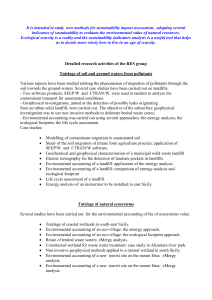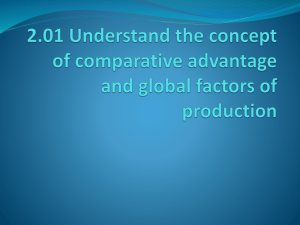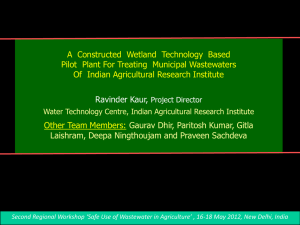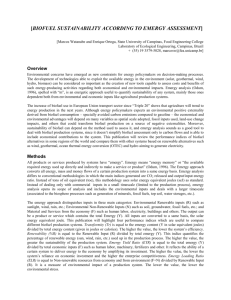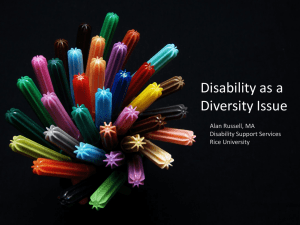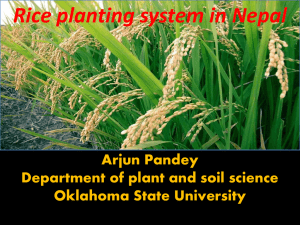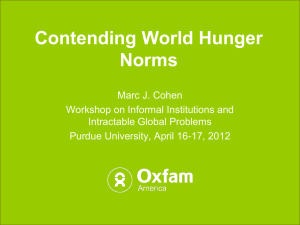张贵龙中英会议汇报材料 - 中英可持续农业创新协作网(SAIN)
advertisement
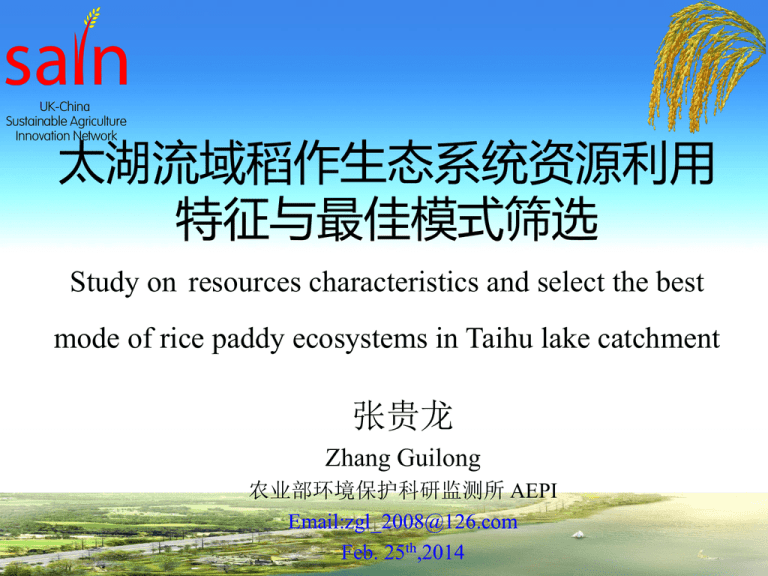
太湖流域稻作生态系统资源利用 特征与最佳模式筛选 Study on resources characteristics and select the best mode of rice paddy ecosystems in Taihu lake catchment 张贵龙 Zhang Guilong 农业部环境保护科研监测所 AEPI Email:zgl_2008@126.com Feb. 25th,2014 提纲 Outline 研究区概况 Location and study sites 研究方法 Methods 结果与分析 Results and analysis 小结 Conclusions 存在的问题 Problems 研究区概况 Location and study sites 试验地位于苏州市相城区望亭镇(31°26‘N,120°28’E),区域年均气温17℃, 平均降水量约1091.3mm。辐射量4190-5016MJ/m2.a,日照时数约2000h。空气密度 为1.22g/L,平均风速3-4m/s。平均海拔3~4m,有机质含量2.45%,土壤pH值7.0~ 7.2,土壤容重1.35g/cm3,土壤侵蚀率19.69g/m2.a。 Experimental plot was located at wangting town, xiangcheng district ,Suzhou city(31°26‘N ,120°28’E), It has an annual average temperature of 17◦C, receives an annual average rainfall of 1.091m and has an annual average solar radiation of about 4190-5016MJ/m2.a, sunshine hours of about 2000h, the average wind speed of 3-4m/s,altitude of 3~4m, SOC content of 24.50%,pHH2o(1:5) 7.0~7.5,a bulk density of 1.35g/cm3,erosion rates of 19.69g/m2.a. 研究方法 Methods 水稻单作系统 Rice monoculture farming 稻/鱼复合系统 Rice–fish farming 稻/鸭复合系统 Rice–duck farming 每系统占地1hm2。稻/鱼共生系统:水稻插秧后投放约3000尾鲤鱼,规格为 100-105g/尾,稻鱼共生期135天;稻/鸭共生系统:水稻返青后投放鸭苗,规格 平均为0.5kg,约1~2周龄,投放量为225只/hm2,水稻穗期将鸭子赶出稻田,稻 鸭共生84天。鱼饲料和鸭饲料成分均为谷类,日投放量参考常规养殖。 Land area of every rice paddy ecosystem was 1hm2. Rice–fish-farming systems: about 3000 fingerlings of cyprind(100-105g/ind) were introduced into rice paddy after transplanted rice, the period of rice and fish growing together was 135 days; Rice–duck-farming systems: 225 ducks (1~2weeks) were introduced into rice paddy while rice leaves green, when rice heading, ducks were expelled form rice paddy, the period of rice and duck growing together was 84days.Grain for feed, according to the conventional method of feeding. 研究方法 Methods 能值分析方法(H.T.Odum,1996) Emergy analysis Odum能值分析理论,以太阳能值作为统一度量标准, 客观地评价和比较多 种类型的环境资源对人工经济系统的贡献,使得难以统一度量的各种生态系统的 能量流、物质流及其它生态流能够进行比较和分析,克服了传统能量分析法的不 足。 Emergy analysis was used to analyze three rice paddy systems to compare and contrast resource use, productivity, environmental impact, and overall sustainability. Emergy analysis was appropriate for this task because of its ability to transform different types of inputs to a common form (solar energy equivalents) to allow meaningful comparisons across the three systems. Despite these different systems and diverse inputs, emergy allowed the quantification and comparison of flows for each system on a common basis. 研究方法 Methods 能值计算参考H.T.Odum(1996)的方法,方法中没有的参考有关文 献;Accord to Odum’s method to calculate emergy or reference to literatures. 太阳辐射能参考国家气象局公布的数据;Solar rdiation datas form bulletins of meteorological administration, China. 购买商品价格以美元计量($),当年(2012年)人民币兑美元平均汇率 6.3125;Commodity prices were measured in U.S. dollars, exchange rate of RMB against $ was 6.3125(2012) 机械和设施按7年使用寿命折算; machinery and buildings used for assume a life of 7years. 柴油、汽油和润滑油等燃料按照当年6-12月平均价格计算;Prices of diesel、petrol and oil were the average price for form June to December in 2012. 按照“能值来源相同的仅取最大值”原则。According to the principle that selected the maximum value in same source emergy. 结果与分析 M(MR+MN) Results and analysis R S N 102 41 60 101 198 All emergy flows are 1014 sej/ha. 系统能值流图 Fig. Emergy flows 165 79 N 185 153 307 Output (Y) 52 N 3 52 3 S R 3 R M(MR+MN) S 56 Output (Y) The aggregated flows shown are local renewable inputs (R), nonrenewable storages (N), purchased energy and materials (M) and the 138 service component of purchased 296 inputs (S) and (Y) which is the sum of the emergy value of the Output inputs. (Y) 结果与分析 系统能值投入 Emergy input Results and analysis M 70 MN 60 ×1014sej 资 源 50 的 能 40 值 ( 30 20 MR 稻鱼共生 Rice–fish R 水稻单作 Rice 稻鸭共生 Rice–duck S N 10 土 雨 水 势 柴 壤 灌 能 油 表 溉 、 层 水 汽 损 油 耗 和 能 润 滑 油 氮 肥 磷 肥 农 钾 药 肥 、 机 疫 械 苗 和 设 施 鱼 苗 鸭 苗 秧 苗 柴 油 饲 、 料 汽 油 水 和 电 润 滑 油 氮 肥 磷 肥 农 钾 药 肥 、 机 疫 械 苗 和 设 施 鱼 苗 鸭 苗 秧 苗 劳 动 力 水 电 饲 料 ) 0 系统投入的各类资源 Resources inputted 结果与分析 S 78.9 26% R 59.7 19% Results and analysis N 2.7 1% S 41.5 21% R 51.7 26% M 101.6 51% M 165.4 54% Rice-fish farming (307×10 1 4 sej/ha) R 51.7 17% S 56.3 19% N 3 2% Rice monculture farming (198×10 1 4 sej/ha) M 185.2 63% Rice-duck farming 14 (296×10 sej/ha) 7985.6kg 7482.3kg 1138.3kg Emergy compositions 8017.6kg 416.5kg N 3 1% 结果与分析 Results and analysis 参数 Parameter 公式 Forluma 稻\鱼 Rice-fish 稻 Rice 稻\鸭 Rice-duck 稻谷太阳能值转换(sej/J) Transformity of rice T/Y1 294.81×103 鱼太阳能值转换率(sej/J) Transformity of fish T/Y2 66.51×106 鸭太阳能值转换率(sej/J) Transformity of duck T/Y3 能值投入率/EIR Emergy investment ratio (M+S)/(R+N) 3.91 2.62 4.41 Y+/E 2.00 1.95 2.15 Y+/(M+S) 1.26 1.38 1.23 E/S 1.95 2.44 2.45 环境负载率/ELR Environmental ratio (MN+S+N) /(MR+R) 0.85 0.72 0.56 能值可持续发展指数/ESI Emergy sustainability index EYR/ELR 1.92 2.21 能值交换率/EER Emergy exchange ratio 净能值产出率/EYR Emergy yield ratio 178.13×103 266.92×103 77.16×105 货币能值产投比Output-input ratio of currency emergy 1.47 结果与分析 Results and analysis 系统经济效益 Economic benefit 参数 稻\鱼 稻 稻\鸭 Parameter Rice-fish Rice Rice-duck 经济产出/Y$ Output 6137.21 4048.15 5515.93 经济投入/E$ Input 3749.63 1663.14 2251.73 净利润/$ Benefit 2387.58 2385.01 3264.20 小结 Conclusions 相对单作系统,复合系统购买的商品和服务能值多,可更新自然资源利用 率低,系统产品能级高,能量转化效率低。 Compared with monoculture farming, Compound farming purchased more M&S, the utilization ratio of renewable natural resources was lower, products with higher lever energy, the conversion ratio of energy was lower. 稻/鱼系统消耗的机械、劳动力等不可更新资源较多,能值投入率高,净 能值产出率低,系统运行造成的环境压力大,可持续发展指数低,系统能值 交换律低、产投比低、经济效益不显著。Rice–fish farming invested more than non-renewable resources, such as machinery, labor,etc. witch with lower EYR,larger ELR, minor EIS, lower EER, the output-input ratio was lower, and no significant economic benefits. 稻/鸭系统投入的种苗、饲料等有机可更新资源较多,系统环境负载率低, 可持续发展指数高,能值交换律及产投比高,系统获得的净利润高。具有生 态、经济效益“双赢”特征。Rice–duck farming invested more seeding ,fodder and others organic renewable resources, witch with lower ELR, higher EIS, higher EER, the output-input ratio was higher, and earned more profits. So this is a mode that can be a winwin. 存在的问题 Problems 系统资源归类缺乏统一标准;There is no uniform classification standards for system resources invested. 系统能值输入计量方法存在分歧; There are different measurement methods of system emergy input. 系统产出能值评价体系缺失; There are no evaluation indicators and methods for system emergy output. 能值原始数据不易获取,换算困难……?Dates are difficult obtain, inconvenient to numeric conversion….. Thank you for your attention!
